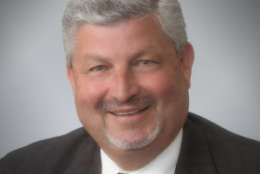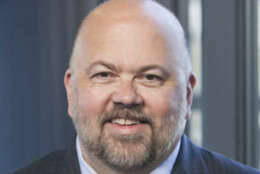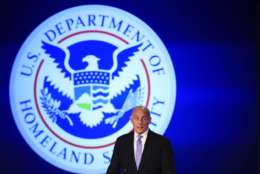employee morale
-
Our survey reveals a sense of resentment of the furloughed by those forced to work.
January 31, 2019 -
Laurie Axelrod and Robin Camarote from the Wheelhouse Group offer advice for how federal managers can reintegrate workers when the government fully reopens.
January 29, 2019 -
Many people who spent their career with Uncle Sam are glad they did. But when it’s over, many people are glad, too. Take today’s holiday guest columnist, Tony Korlik, for example.
December 31, 2018 -
Ahead of the president's fiscal 2019 budget request, set for release next Monday, the National Treasury Employees Union is warning its members of familiar proposals that may reappear.
February 07, 2018 -
Most agencies saw an increase in employee engagement in the 2017 Best Places to Work in the Federal Government rankings. Some of the increases were noteworthy.
December 08, 2017 -
FEMA has a limited view into the allegations of misconduct that come from the agency's employees, because it lacks both the case management system and the written disciplinary policies to address misconduct from its cohort of temporary workers.
August 01, 2017 -
Both Henry Kerner, the president's pick to be the U.S. Special Counsel at the Office of Special Counsel, and Claire Grady, the nominee to be the undersecretary for management at the Homeland Security Department, say they both share similar workforce priorities.
June 28, 2017 -
Staffing shortages, attrition and low morale cause perpetually ongoing problems at every level of the Secret Service, said the Homeland Security Department's inspector general. The president's 2018 budget request calls for more funding and employees, but neither the IG nor members of Congress say it's enough to turn around the beleaguered agency.
June 08, 2017 -
Homeland Security Secretary John Kelly said he's not surprised by the low morale his workforce has felt for years. In his first public speech since becoming secretary, Kelly offered a glimpse of his management and leadership style and said lawmakers should "shut up and support the men and women on the front lines."
April 18, 2017 -
Federal employees offered mixed reviews of the Office of Management and Budget's new plan to reorganize and restructure the federal government and workforce. Meanwhile, more than 40 percent of respondents to an exclusive Federal News Radio survey said morale has significantly decreased at their agencies since the beginning of the new administration.
April 17, 2017 -
Roughly 85 percent of current Senior Executive Service members are eligible to retire within the next 10 years. And about half can retire within the next president's first term in office. But as the administration looks to agency career leaders to steer the upcoming presidential transition, 55 percent of GS-14s and GS-15s say they're not interested in joining the SES.
June 22, 2016 -
In Federal News Radio’s exclusive fifth annual survey of federal CHCOs and deputy CHCOs, respondents rated improving the hiring process as their top priority for 2016, just a bit ahead of enhancing employee engagement and the training and development of the workforce.
March 07, 2016 -
The Homeland Security Department said cultivating and training high-performing leaders and supervisors, and improving communication will help DHS make more significant strides on employee engagement. DHS scored the lowest of all large agencies in the 2015 Federal Employee Viewpoint Survey.
September 29, 2015 -
The results of the 2015 Federal Employee Viewpoint Survey are out from the Office of Personnel Management. Large and small agencies made incremental progress in boosting engagement and leadership scores this year.
September 28, 2015 -
The deadline for the annual Employee Viewpoint Survey is rapidly approaching. Federal employees selected to participate in the survey &dmash; gauging employee morale and views of agency management — have until Friday to complete the survey. As of Tuesday morning, about 330,000 employees have completed the online survey, OPM officials said in a press call with reporters. Another 80,000 or so are still in the process of completing the survey.
June 10, 2014












